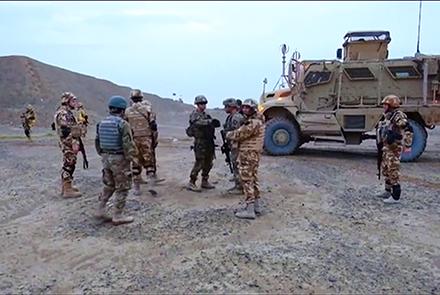NATO commanders in the southern province of Kandahar have said their training advisers have started spending more time in the field with the Afghan army to enhance the fighting capabilities of the conventional forces in their campaign against the Taliban.
NATO officers in Kandahar say that by training lower ranks within Afghanistan’s armed forces will boost their professional abilities in combat.
On Saturday U.S Defense Secretary Jim Mattis said that President Donald Trump is waiting for an assessment by US intelligence services before deciding whether or not to increase the number of American troops in Afghanistan and further increase the advisory mission to the conventional forces in the country that has been grappling with unprecedented waves of violence over the past months.
With the end of NATO’s combat mission in Afghanistan in 2014, the alliance decided to reduce the number of its combat soldiers in the country, however NATO announced that it would deploy its military advisors in the military corps and army units to advise, train and support the Afghan security forces.
"The further down you can reach the better," said U.S. Army Captain Everett Heiney, an advisor in Kandahar. The strategy now includes advising training of Afghan units at lower levels within the ranks.
"You can always use more advisers to push down to the lower levels because ... it's good if there are more people doing training, more people at each brigade able to be with the units on a regular basis," Heiney said.
Meanwhile, General Abdul Rahim, the commander of 203 Atal Army Corps in Kandahar has said that the wider engagement of NATO advisors in the ranks of the security forces will help local forces to boost their war capacities.
“They (Afghan soldiers) first begin their training in various fields, including artillery and the leadership of the army. When they start their active duties in the fight for the elimination of the enemy and for the peace in Afghanistan, this will be very helpful,” Abdul Rahim said commander of the technic and artillery unit of Afghan National Army (ANA) in Kandahar.
NATO leaders last year approved a plan that has kept more than 13,000 international troops in Afghanistan.
In recent testimony to the U.S. Congress, gen. John Nicholson, commander of the NATO and US forces in Afghanistan said "a few thousand" more advisers were needed, largely to expand his program of providing more tactical training to more units.
There are some rumors that Nicholson has called for 5,000 additional troops to be added to the current number.


